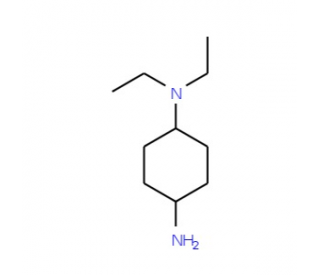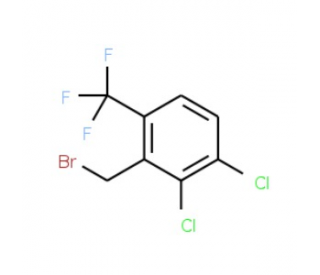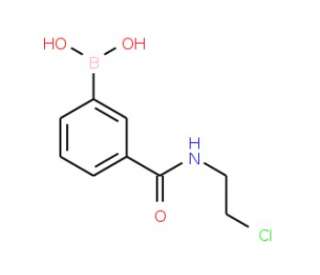详细说明
Purity
>95%, by SDS-PAGE under reducing conditions and visualized by silver stain
Endotoxin Level
<0.10 EU per 1 μg of the protein by the LAL method.
Activity
Measured by its ability to enhance neurite outgrowth of E16-E18 rat embryonic cortical neurons. Recombinant Human Reg3A immobilized at 10 µg/mL is able to significantly enhance neurite outgrowth.
Source
E. coli-derived Glu27-Asp175, with an N-terminal Met
Accession #
N-terminal Sequence
AnalysisMet
Predicted Molecular Mass
17 kDa
SDS-PAGE
17 kDa, reducing conditions
5940-RG |
| |
Formulation Lyophilized from a 0.2 μm filtered solution in PBS. | ||
Reconstitution Reconstitute at 500 μg/mL in PBS. | ||
Shipping The product is shipped at ambient temperature. Upon receipt, store it immediately at the temperature recommended below. | ||
Stability & Storage: Use a manual defrost freezer and avoid repeated freeze-thaw cycles.
|
Background: Reg3A
Reg3A (Regenerating islet-derived protein 3 alpha), also known as Reg III-alpha, hReg3 beta, or HIP/PAP (human islet peptide / pancreatitis associated protein) in humans and PAP2 in rodents, is a secreted 16-17 kDa member of the Reg family of C-type lectins (1-5). The type III genes in the Reg family, including Reg3A, are thought to have cell-protective and proliferative effects (4-6). The 149 amino acid (aa) mature human Reg3A (aa 27-175) contains a small, trypsin-cleavable PAP domain
(aa 27-39) and a C-type lectin domain, and lacks potential N-glycosylation sites (3, 4). Mature human Reg3A shares 60% and 57% aa sequence identity with mouse and rat Reg3A, respectively, while human Reg3A shares 84% aa sequence identity with the only other known human type III Reg, Reg3G (also called Reg3 gamma or PAP1B). EXTL3 (exostosis-like gene 3) is a putative receptor for Reg proteins (2, 7). In humans, Reg3A expression is increased in acute pancreatitis, and its expression and proteolytic activation in the small intestine is thought to have a protective effect against infection and TNF-alpha -induced stress (1, 8). Rodent Reg3A is mainly expressed in the intestinal tract, keratinocytes in inflamed skin, pancreatic acinar cells and islet alpha cells, where proinflammatory cytokines such as IL-6 and
IL-17 enhances its expression (5-7, 9-11). Pancreatic Reg3A expression is also increased in mouse models of type 1 diabetes (6). In the rat brain, nerve injury and inflammation increase Reg3A expression in dorsal root ganglion neurons, while low dopamine levels in stress induce its production by melanocytes (12, 13). Treatment of rat macrophages with Reg3A causes up‑regulation of NFkB signaling and modulates cytokine production (2, 4, 14).
References:
Orelle, B et al. (1992) J Clin. Invest 90:2284.
Parikh, A. et al. (2012) Biomol. Concepts 3:57.
Graf, R. et al. (2001) J. Biol. Chem. 276:21028.
Viterbo, D. et al. (2008) J. Immunol. 181:1959.
Cui, W. et al. (2009) Growth Factors 27:195.
Lu, Y. et al. (2006) Am. J. Physiol. Endocrinol. Metab. 291:E50.
Lai, Y. et al. (2012) Immunity 37:74.
Medveczky, P. et al. (2009) Biochem. J. 420:335.
Gurr, W. et al. (2007) Diabetes 56:34.
Cash, H.L. et al. (2006) Science 313:1126.
Lehotzky, R.E. et al. (2010) Proc. Natl. Acad. Sci. USA 107:7722.
He, S.Q. et al. (2010) Mol. Pain 6:23.
Konishi, H. et al. (2011) Biochem. Biophys. Res. Commun. 407:7.
Viterbo, D. et al. (2008) J. Immunol. 181:1948.
Long Name:
Regenerating Islet-derived IIIa
Entrez Gene IDs:
5068 (Human); 19694 (Mouse); 171162 (Rat)
Alternate Names:
hepatocarcinoma-intestine-pancreas; HIPpancreatitis-associated protein; Human proislet peptide; Lithostathine 3; pancreatic beta cell growth factor; Pancreatitis-associated protein 1; PAP homologous protein; PAP1FLJ18565; PAP2; PAPPAP-H; PBCGF; proliferation-inducing protein 34; proliferation-inducing protein 42; Reg III-alpha; REG3; Reg3A; REG-3-alpha; regenerating islet-derived 3 alpha; regenerating islet-derived protein 3-alpha; Regenerating islet-derived protein III-alpha; REG-III










 粤公网安备44196802000105号
粤公网安备44196802000105号